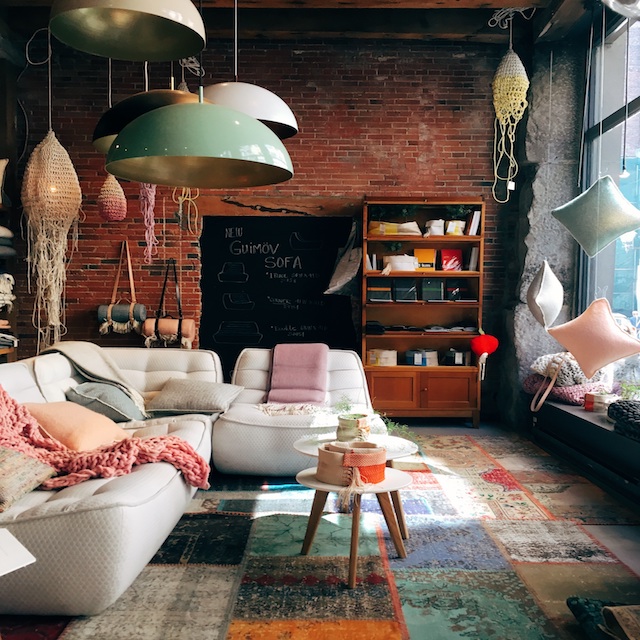
Today I made a wonderful Tuscan bean soup with warm bread for dinner.
It’s cold and rainy outside, dampening me to the bones. As I work on my laptop, I have on one of my favorite cozy sweaters that keep me warm even on the coldest days. And I am content.
As we start this new year and weather the long nights still ahead of us, we would do ourselves well to embrace the blessings of the season and to “hygge” our homes, as I did today.
What is hygge (pronounced HOO-Gah)?
Simply put, the closest translation for this Danish word is “cozy“. It is derived from a 16th century Norwegian word hugge which means “to comfort” (“hug” in English). And this new craze associated with hygge is the obsession with all things cozy, homespun and natural—a perfect accompaniment for the winter months.
Hygge has evolved naturally in Denmark and many of the Northern European countries over the many years. During the long winter months, it is a perfect antidote to Seasonal Affective Disorder—or SAD.
Although they have, at times, 17 hours of darkness a day, Denmark is consistently noted as one of the happiest countries in the world! They manage that with their quest for hygge.
With several books coming our way in 2017 on this “new” topic, the focus of hygge is on creating a warm environment. It is akin to the feeling and purpose of Chinese feng shui (aligning oneself with the flow of the natural world for greater well being). Both philosophies focus on the importance of closeness, connection and relationships, and of being rather than having.
So, hygge is sort of a Northern European cousin to feng shui.
And lest you think it’s a call to overindulge, there is another concept—a Swedish word “lagom” which speaks to moderation and teamwork, fairness and equality. No one is left out. This demonstrates another way in which it is connected with feng shui: balance and harmony.
In a recent article in the New York Times, Cassie Jones, executive editor at HarperCollins and publisher of “The Little Book of Hygge” said, “It (hygge) had the feel of the feng shui phenomenon. An opportunity to look to another culture for something intuitively familiar yet refreshingly new.”
So, how do we create hygge?
1. The Golden Light.
Hygge, it appears, is only possible with golden light. In Danish custom, candles set the ambience for proper hygge. Danes are so fond of candles that the Danish word for spoilsport in Danish is lyseslukker, which literally means, “one who puts out the candles.”
So, candlelight is top priority in achieving hygge. Lots of candlelight. And if there is a fireplace, that will be roaring, as well.
2. Intimacy.
The Dane’s particularly focus on creating hyggelige (the act of being hygge) environments for intimate gatherings. In fact, it is a focus of conversation in the evening; particularly what can make the event more hyggelige!
Hygge is akin to an après-ski experience. After soaking in a hot bath, you slip on a warm sweater and a pair of wool socks. You gather around a roaring fire with a few intimate friends, sipping brandy or 20-year-old scotch. All is well in life.
Or, hygge can be a solitary experience. Ever curl up with a good book on a cozy chair with a blanket wrapped around you?
Family photos, folk art and handmade items that represent who you are add intimacy to your home. Hyggelige home design includes low ceilings, warm wall colors, cozy nooks, lush thick drapes that can be pulled across the windows, and worn wood floors with scattered wool area rugs. Research shows that these types of spaces promote intimacy and connection.
3. Sustenance.
For gatherings, much consideration is made to the food and drinks served. Comfort foods include slowly cooked stews, soups filled with organic, homegrown vegetables, baked bread, and homemade pies with fresh whipped cream on top.
Beverages may be hot cocoa, a deep, fruity cabernet, or a nice cup of tea in an old, mix-matched china tea cup (a colleague once explained the difference between having tea in a china cup and a mug—no comparison!)
4. Mother Nature Knows Best.
Nature places a big role in hygge. Decorative items from nature—such as stones, beach glass, seashells and driftwood as well as lots of healthy live plants–-contribute to a hyggelige space.
Hygge spaces have plenty of rich textiles such as inviting throw blankets and soft, comfy pillows to your seating spaces.
Furnishings are made with natural materials and lots of curves—basically things that are yin with nurturing qualities. Hygge has a very wabi-sabi kind of quality (the art of honoring objects that show use, age, patina and imperfections), such as old wooden spoons and rough-hewn pottery.
5. Simpler Times.
Hygge brings us back to a gentler time, away from the chaos and stress of modern life; back to nature and homesteading. I believe that is why it is showing up today. It’s a force that counteracts the triviality and superfluousness of society. It is meaty and substantial, and gives us an anchor to all that is good and wholesome.
At a time when technology creates fake closeness with hundreds of Facebook friends, hygge provides the opportunity for kinship and true connection.
Whatever happens to hygge over the course of this year, it is welcome in my home and life for all time.
It’s easily attainable and personal because it’s natural, unique and homemade. But as with all other trends, I am sure that there will be a long line of hyggelige products that will try to tempt us (just as with “shabby chic”).
But for some of us, hygge will inspire us to treasure the furnishings and belongings in our homes. To keep items around longer because of their usefulness and in spite of their wear; to forgo the disposable mentality for a “fix it” one; to cherish handmade objects from friends and family over cheaply-made, mass-manufactured objects from Home Goods.
So, I will channel my inner-Dane to embrace our world in a wholly natural and cozy way.
Anyone joining me?
~
Author: Maureen Calamia
Image: Unsplash/Stephen Di Donato
Editor: Erin Lawson






Read 2 comments and reply